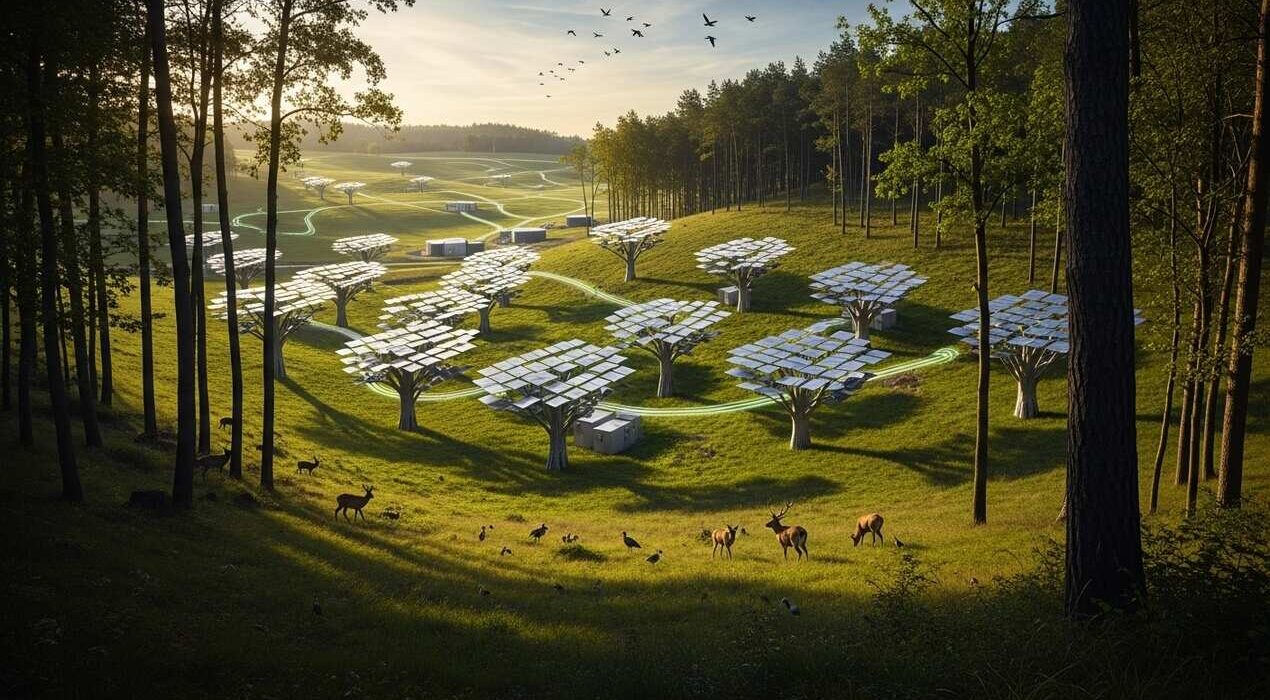Scientists have introduced solar trees that generate as much energy as a small farm. This breakthrough blends renewable energy with conservation, offering a greener path to meet rising global energy demand.
How Solar Trees Work
Solar trees are built to resemble real trees. Their photovoltaic panels spread out like leaves to capture maximum sunlight. Unlike traditional solar farms, they require very little land. As a result, forests and ecosystems remain untouched.
The vertical design also improves sunlight exposure throughout the day. Therefore, solar trees achieve higher efficiency compared to flat solar panels.
Power and Practical Use
Each solar tree can produce enough electricity to power several homes or even a small farm. This makes them ideal for rural villages, forested regions, and off-grid communities. In addition, they can fit into city parks, streets, and public spaces, combining function with beauty.
Environmental Benefits
Solar trees do more than generate energy. They reduce the need to clear forests for massive solar farms. This helps protect habitats, preserve biodiversity, and cut emissions linked to deforestation. In this way, renewable energy growth aligns with ecological responsibility.
Future Potential
Researchers are working on modular solar tree designs. These can scale up to power larger areas without harming nature. Built with lightweight, durable materials, the structures need little maintenance while ensuring efficient energy conversion.
Solar trees prove that innovation can balance progress with preservation. They provide clean energy at farm scale without destroying forests. As renewable solutions evolve, this technology shows how sustainability and conservation can grow side by side.






